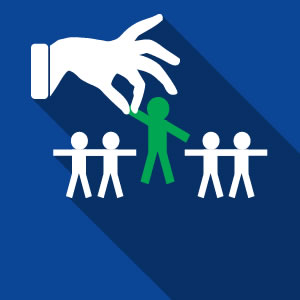Chapter 3
Choosing and Using

Running along the top of each Framework are headed columns that reflect the stages of the marketing funnel. The marketing funnel is an established model which details the theoretical customer journey from first contact with your brand/organisation through to the ultimate outcome that is desired. The columns reflect the stages as your audience moves from first awareness of your work through to interest, preference, action and advocacy.
The Paid, Owned and Earned Framework
Download the Paid, Owned and Earned Framework:
PowerPoint | PDF
Definitions
| PAID: | Channels you pay to leverage – paid search, display ads, sponsored tweets, etc. |
| OWNED: | Channels you own and control – your website, blog, Twitter, Facebook, YouTube etc. |
| EARNED: | Customers and/or stakeholders become the channel with their content – blogs, tweets, YouTube, word of mouth, viral, proactive influencer outreach, etc. |
As the media continues to evolve, established marketing silos are being broken down and the distinction between many disciplines is becoming blurred. Instead of just working on ‘earned’ media opportunities, many PRs are now also involved with ‘paid’ media (sponsored tweets, native advertising, etc.,) and managing ‘owned’ media (Facebook pages, company blogs, etc.,) too. To take account of this new reality, the Paid, Owned and Earned Framework allows holistic measurement across each.
 Using this Framework helps you to better understand the role each channel plays in achieving your desired campaign objective (i.e. awareness, engagement, attitude and behaviour). Each audience responds differently, but you will find some respond better to paid activity, and others to owned or earned.
Using this Framework helps you to better understand the role each channel plays in achieving your desired campaign objective (i.e. awareness, engagement, attitude and behaviour). Each audience responds differently, but you will find some respond better to paid activity, and others to owned or earned.
The relationships between these channels are not always obvious. It enables you to see where channels have performed well or not so that you can make an informed decision on where to focus your efforts, e.g. if paid channels are less successful, you may reduce investment for this campaign, equally if owned channels are achieving better results you may increase resource in channel management.
If the work that you do covers Paid, Owned and Earned media, then this is the Framework for you to use.
The Programme, Business and Channel Metrics Framework
Download the Programme, Business and Channel Metrics Framework:
PowerPoint | PDF
Definitions
| PROGRAMME METRICS | Metrics directly tied to your programme or campaign objectives. |
| BUSINESS METRICS | Metrics designed to measure the impact to the business / organisation of the campaign or initiative. |
| CHANNEL METRICS | Metrics that are unique to specific social media channels – Twitter, Facebook, YouTube, Vimeo, LinkedIn, etc., |
This Framework is likely to work best for you if you are running a social media campaign that integrates closely with more traditional PR or offline marketing campaigns, as metrics for those other elements can be included in the programme and channel metrics lines. This Framework helps show how these various components affect one another. It can show an overarching cause-and-effect relationship running throughout – from left to right but also from top to bottom. The important thing is that the Framework helps guide your understanding of how these various components affect one another.
Note: Channel metrics should always support the business and/or programme metrics and never be included just because they are there. If you can’t explain why they matter, then don’t include them.